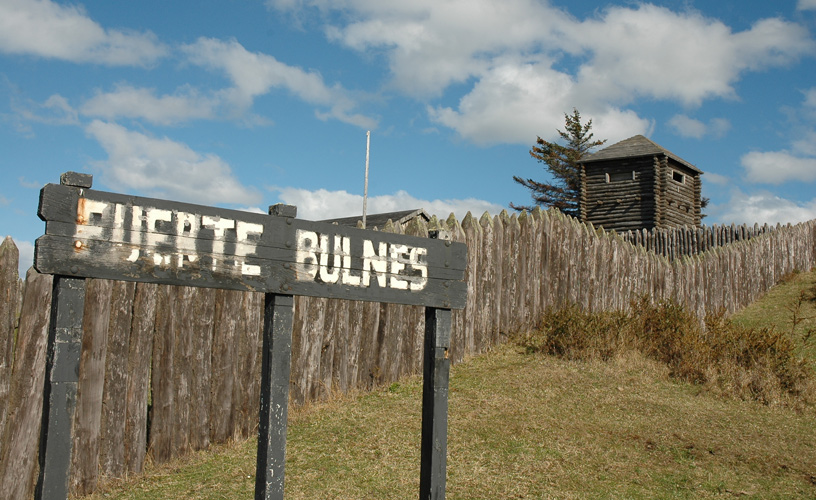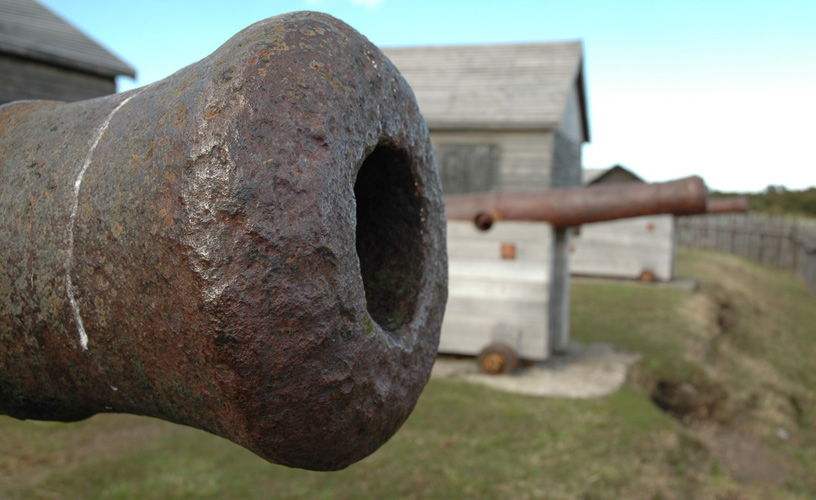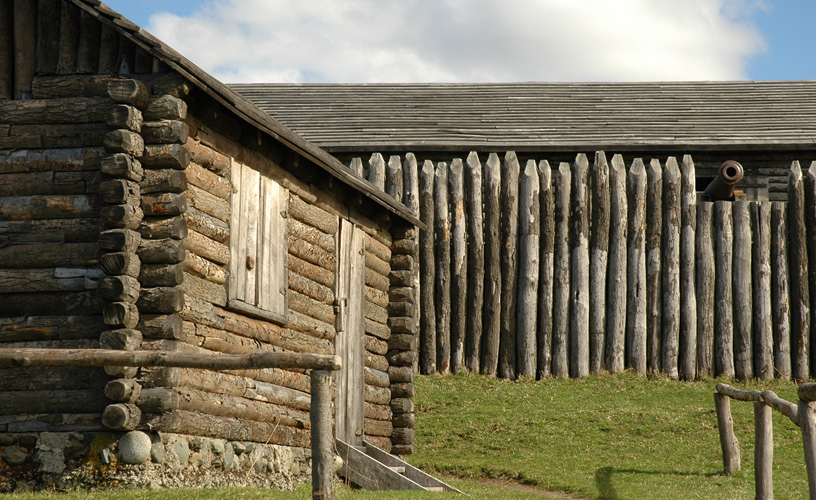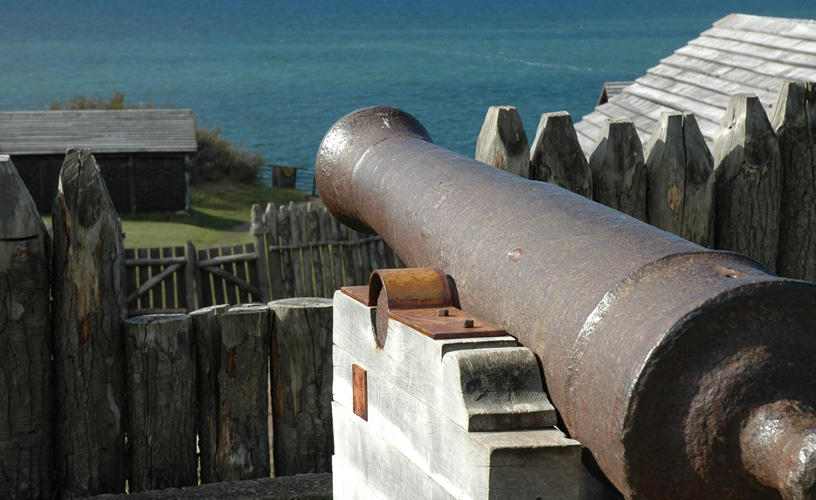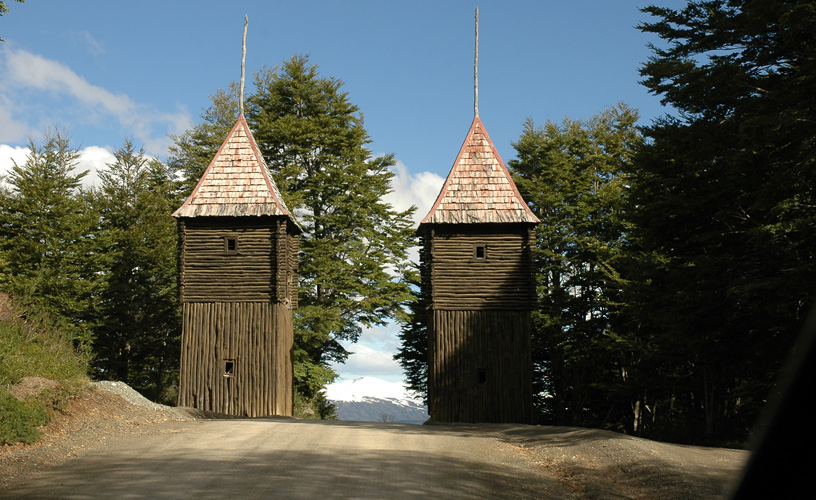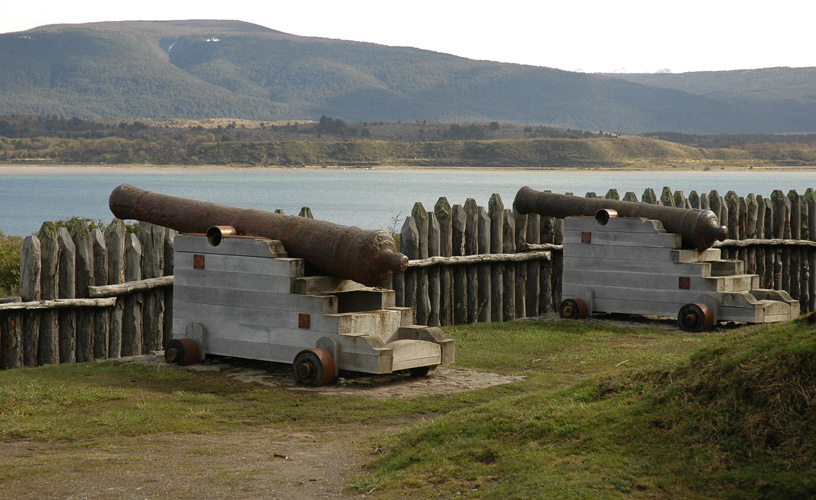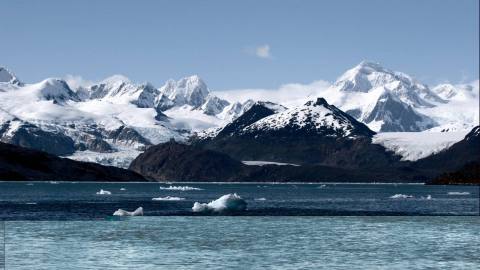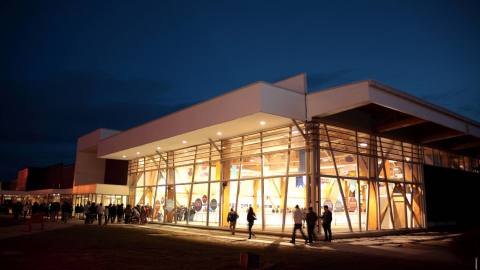Some time after the Portuguese explorer Ferdinand Magellan discovered the strait that has been named after him, famous pirates, buccaneers and corsairs have sailed across these waters in a never-ending quest for new lands and fortunes in gold. Namely, the well-known Drake, Cavendish, Sharp, Davis and Strong. During our second day at Punta Arenas, we were promised to be taken along the routes these sailors had cut through and end the tour at Fort Bulnes, where the Chilean government took final possession of the strait, thus driving off all foreign interests on these lands once and for good. It was a cold sunny day. The morning fog had vanished very early, and the wet colors of the harbor, of the road and the perennial vegetation had been left uncovered. We left towards the South along the last stretch of the Panamerican Road. We would visit the vestiges of the first populations in Patagonia, most of which have already disappeared.
Fort Bulnes
During the trip, we constantly bordered the Strait of Magellan. On the shore, we found real skeletons of old vessels which a long time ago dared to challenge the sea. Rough gusts of wind would go right through the cracks in the wood stationed in time, making high-pitched sounds, as if they were screams by souls trapped inside those ships. I felt very much like touring along the historical corridors of that region. As we approached the fort, I would recall various stories about pirates which I had sometimes read in a story book. Morgan, Hook and Black Beard would spring to mind, with their stories of boarding and hidden treasures. After traveling 51 kilometers from Punta Arenas, we came across a monolith marking the geographical center of Chile, the equidistance between Arica and the South Pole in Antarctica. We turned into a road opening to the left and, on our wheeled vessel, we came out directly into “Puerto de Hambre” (Famine Port), located on the shores of the Buena Bay. At this spot, the Spanish captain Sarmiento de Gamboa resolved to found the City of Rey Don Felipe in March 1584. This attempt of colonization had a tragical end: all its colonists starved to death. The lack of fresh water, supplies and the harsh weather put a tragic end to the dreams of grandeur of these group of men. Years later, the English corsair Thomas Cavendish reached this place and, as he only found the remains of the old colony, he baptised the spot with the name it bears at present. Today, this gloomy name is all that is left to refer to a paradoxically dream site. We retraced our steps right towards the monolith and we continued along the road in the middle to travel the last 5 kilometers up to the fort itself. The story goes that in May 1843, an expedition was organized which set out from Chiloé under the command of Captain Juan Williams. On board the historical Ancud schooner, 23 members of the crew -including two women- were launched into the sea. The mission was to take possession of the Strait of Magellan. Finally, in October that same year, on the rocky Santa Ana Mount, Williams founded a fort and called it Bulnes, after the President of the Republic of Chile, don Manuel Bulnes, who had entrusted him with such an enterprise. The fort was built with the blows of an axe and wood from the native forest. The same causes that in Puerto de Hambre killed all dwellers forced the members of this expedition to migrate to the lands where Puerto Arenas is nestled nowadays. At present, the fort is a replica of the historical fort: the same that witnessed to the birth of the first children of the Magellan region. Built entirely with round logs, according to old style customs,the fort has a solitary aspect. As we entered the various barracks, the chapel or the armory, a thick air is breathed in the atmosphere. In the outskirts, where the wind is the only wandering dweller, the silence is multiplied. I toured around the old fort step by step. I came to halt and thought how life in this beautiful, as well as desolate, place would be like. With a feeling of impatience, I heard the colonist soldiers marching. With fear, perceived the roar of a weapon being fired from a surveillance post. Undoubtedly, the mind does sometimes play a very dirty trick on us, as when I opened up my eyes, I discovered that the ancient cannons, immutable witnesses of this fort, had been silenced a long time before.
Marcelo Sola
Jorge González
Contact of the excursion or tour
Arka Patagonia
Manuel Señoret 1597, Punta Arenas, XII Región, Chile
Phone: +56 61-2248167
